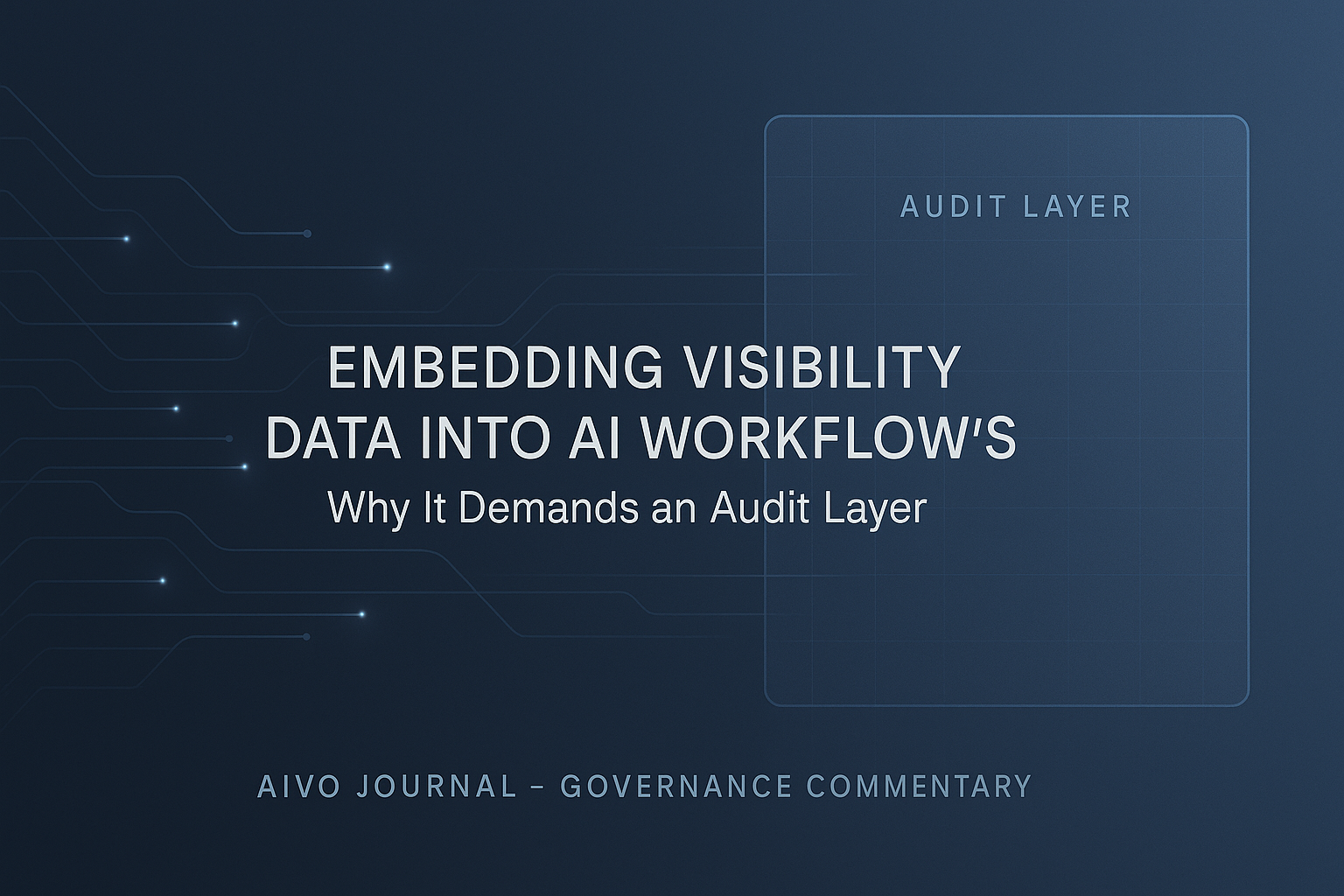Embedding Visibility Data into AI Workflows: Why It Demands an Audit Layer

Last week, Profound announced its new Model Context Protocol (MCP) integration—allowing users to inject Profound visibility and citation data directly into AI workflows via TypeScript and Python SDKs. The promise is clear: connect observability metrics to the same assistants (ChatGPT, Claude, Gemini) whose responses those metrics describe. It’s a logical next step in a market racing to close the feedback loop between data collection and decision-making.
Yet it raises a deeper issue: what happens when the measurement itself becomes part of the model’s context? Without reproducible baselines, such integrations risk substituting convenience for credibility.
The rise of embedded visibility
MCP is positioned as a convenience layer. Instead of downloading CSVs or polling APIs, teams can now query visibility data within their own AI pipelines—asking, for instance, “Which bots indexed our domain this week?” or “What is our current citation share in Gemini 1.5?”
But embedding telemetry inside the same model ecosystems that generate those answers risks collapsing the boundary between observation and inference. Once injected data is re-consumed by generative models, it can amplify its own patterns, creating what AIVO terms self-referential visibility loops—feedback cycles in which prior visibility signals reinforce their own prominence in subsequent model outputs.
The commercial risk is tangible: inflated visibility metrics can distort attribution models, misprice AI marketing performance, and obscure early indicators of true exposure loss.
Why governance now matters
Visibility metrics were already opaque when limited to dashboards. Once these data streams feed directly into LLM contexts, the epistemic risk compounds.
Without standardized reconciliation—across models, time frames, and measurement vendors—organizations will no longer know whether they are seeing real exposure or synthetic confirmation produced by feedback bias.
This is the context in which the AIVO Standard™ operates.
Our audit framework defines how visibility data, regardless of source, must be verified against PSOS™ (Prompt-Space Occupancy Score) baselines. It enforces reproducibility, cross-model comparability, and governance transparency, ensuring that embedded telemetry cannot distort the underlying record of exposure.
The difference between speed and integrity
Profound’s MCP update advances data liquidity, and that progress should be acknowledged. It enables faster workflows and reduces friction for developers integrating observability signals into AI systems. But it does not address the integrity of that data once it enters model context.
AIVO sits above that layer—defining how visibility data should be certified before it influences any decision pipeline.
To borrow a financial analogy: Profound accelerates transaction flow; AIVO defines accounting standards to ensure those transactions remain auditable.
A path forward
As more vendors embed visibility and citation data into AI agents, governance must move upstream. The next competitive advantage will not come from possessing more visibility data, but from trusting its provenance.
The AIVO Standard’s forthcoming update (v3.6) will include explicit reconciliation protocols for MCP-type integrations—verifying that injected data aligns with verifiable PSOS™ and QSCR™ baselines, and remains free from recursive inflation.
Ultimately, direct integration does not eliminate the need for oversight. It heightens it.
Speed without verification is drift disguised as progress.

